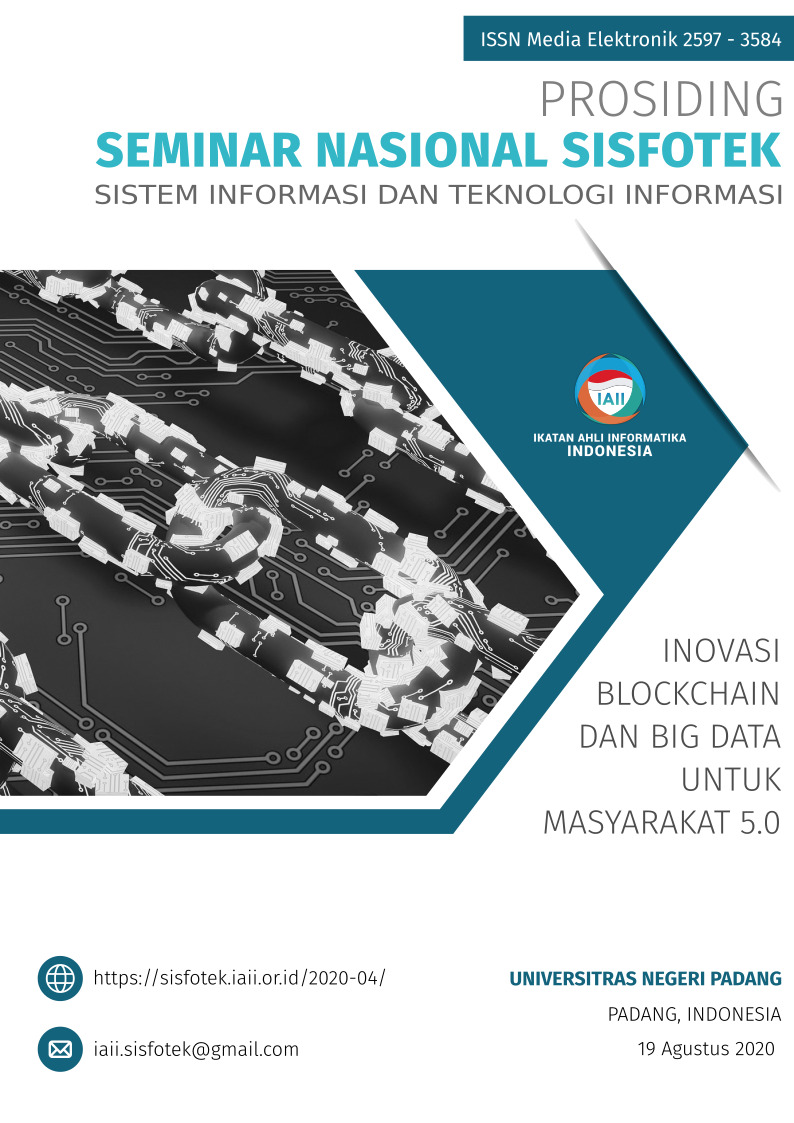Sistem Rekomendasi Tempat Kuliner Di Kabupaten Xyz Menggunakan Metode Multy-Objective Optimization By Ratio Analysis
Keywords:
Culinary Tourism, Decision Support Assistant, Multy-Objective Optimization by Ratio Analysis (Moora).Abstract
Culinary Tourism is one of the activities that must be visited by tourists when visiting a certain area that has special food. Food is now not just meeting the needs of one's life but has become an art in culinary. Some people have a tendency to visit homogeneous eating places (not varying), this can be caused by several things, including budget (shopping budget), type of food, facilities, location and opening time. Visiting a suitable place to eat is certainly one of the things that need attention, but information about the complete culinary place is still not widely known by tourists and new residents in the regency of XYZ. To determine a culinary place, tourists must really know complete information about a culinary place that they want to visit to suit their wants and needs. By having to make a decision made by tourists to determine the culinary places that will be visited then the construction of a system that aims to support a decision that determines where culinary in accordance with one's wishes in XYZ Regency. The system development will use the method of Multy-Objective Optimization by Ratio Analysis (Moora) and the approach
References
B. Triantoro, T. H. Pudjiantoro, and F. R. Umbara, “Sistem Pendukung Keputusan Seleksi Siswa Jalur Penelusuran Minat dan Kemampuan menggunakan Metode ID3 dan AHP,” pp. 281–287, 2017.
S. Sn, M. Ds, S. Nurusholih, and S. Sn, “Perancangan Promosi Destinasi Wisata the Promotion Design of the Typical Culinary,” vol. 2, no. 2, pp. 478–485, 2015.
T. S. Jaya and D. Sahlinal, “Perancangan Kantor Digital Berbasis Framework dengan Metode Waterfall pada Politeknik Negeri Lampung,” J. Pengemb. IT, vol. 02, no. 02, pp. 14–17, 2017, doi: 10.30591/JPIT.V2I1.435.
S. S. Pandean and S. Hansun, “Aplikasi WEB untuk Rekomendasi Restoran Menggunakan Weighted Product,” J. Teknol. Inf. dan Ilmu Komput., vol. 5, no. 1, p. 87, 2018, doi: 10.25126/jtiik.201851626.
M. Salam, T. H. P, and W. Uriawan, “Sistem Pendukung Keputusan Penentuan Daerah Berpotensi Kemiskinan Absolut di UPT BP3AKB Kecamatan Cisarua Menggunakan Metode Analytic Hierarchy Process-Weighted Product,” Semin. Nas. Telekomun. dan Inform., no. Selisik, pp. 38–43, 2016.
W. K. M. Brauers and E. K. Zavadskas, “The MOORA method and its application to privatization in a transition economy,” Control Cybern., vol. 35, no. 2, pp. 445–469, 2006.
U. K. Mandal and B. Sarkar, “Selection of Best Intelligent Manufacturing System (IMS) Under Fuzzy Moora Conflicting MCDM Environment,” Int. J. Emerg. Technol. Adv. Eng., vol. 2, no. 9, pp. 301–310, 2012, [Online]. Available: www.ijetae.com.
M. Astradanta, I. M. A. Wirawan, and I. K. R. Arthana, “Pengembangan Sistem Penunjang Keputusan Pemilihan Tempat Kuliner Dengan Menggunakan Metode AHP Dan SAW Studi Kasus?: Kecamatan Buleleng,” Kumpul. Artik. Mhs. Pendidik. Tek. Inform. (KARMAPATI, vol. 5, pp. 2252–9063, 2016, [Online]. Available: file:///D:/SMT 6/SKP/PILIHAN/Sistem Penunjang Keputusan Pemilihan Tempat Kuliner Dengan Menggunakan Metode AHP Dan SAW Studi Kasus Kecamatan Buleleng.pdf%0D.
R. Attri and S. Grover, “Decision making over the production system life cycle: MOORA method,” Int. J. Syst. Assur. Eng. Manag., vol. 5, no. 3, pp. 320–328, 2014, doi: 10.1007/s13198-013-0169-2.
S. Rokhman, I. F. Rozi, and R. A. Asmara, “Pengembangan Sistem Penunjang Keputusan Penentuan Ukt Mahasiswa Dengan Menggunakan Metode Moora Studi Kasus Politeknik Negeri Malang,” J. Inform. Polinema, vol. 3, no. 4, p. 36, 2017, doi: 10.33795/jip.v3i4.41.
Downloads
Published
How to Cite
Issue
Section
License
Copyright (c) 2020 Prosiding SISFOTEK

This work is licensed under a Creative Commons Attribution 4.0 International License.
http://creativecommons.org/licenses/by/4.0







